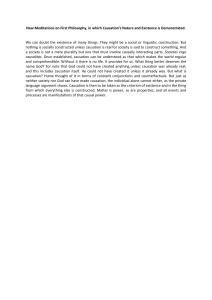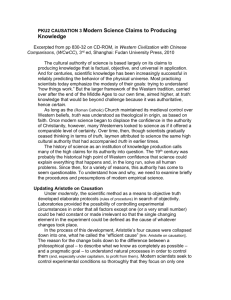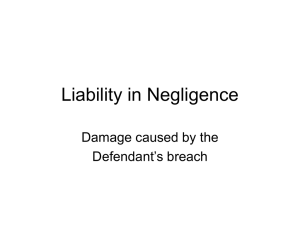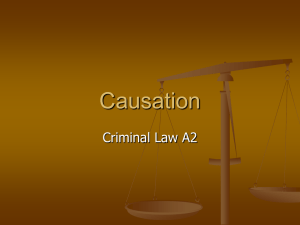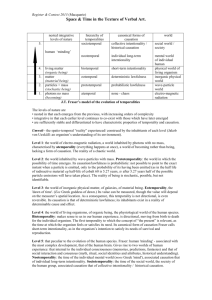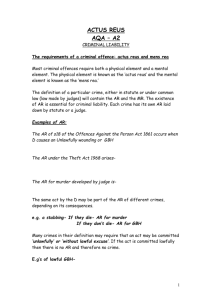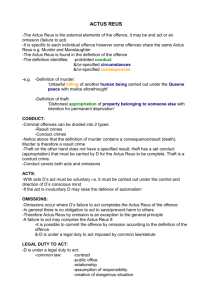The prosecution must prove that the death of the victim
advertisement
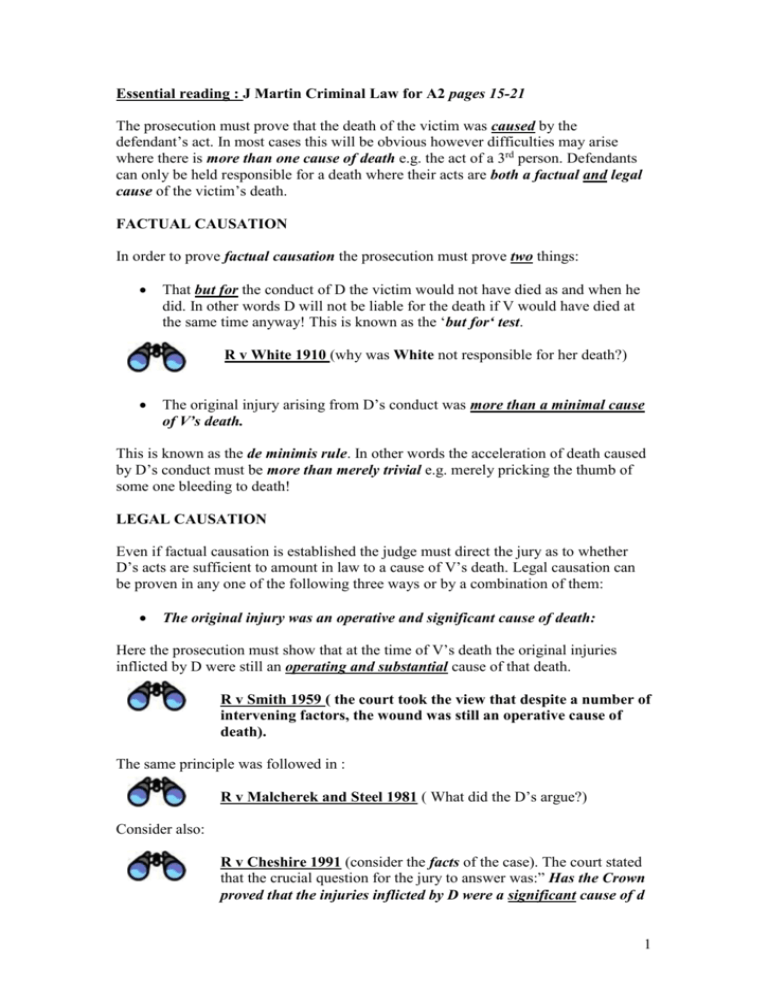
Essential reading : J Martin Criminal Law for A2 pages 15-21 The prosecution must prove that the death of the victim was caused by the defendant’s act. In most cases this will be obvious however difficulties may arise where there is more than one cause of death e.g. the act of a 3rd person. Defendants can only be held responsible for a death where their acts are both a factual and legal cause of the victim’s death. FACTUAL CAUSATION In order to prove factual causation the prosecution must prove two things: That but for the conduct of D the victim would not have died as and when he did. In other words D will not be liable for the death if V would have died at the same time anyway! This is known as the ‘but for‘ test. R v White 1910 (why was White not responsible for her death?) The original injury arising from D’s conduct was more than a minimal cause of V’s death. This is known as the de minimis rule. In other words the acceleration of death caused by D’s conduct must be more than merely trivial e.g. merely pricking the thumb of some one bleeding to death! LEGAL CAUSATION Even if factual causation is established the judge must direct the jury as to whether D’s acts are sufficient to amount in law to a cause of V’s death. Legal causation can be proven in any one of the following three ways or by a combination of them: The original injury was an operative and significant cause of death: Here the prosecution must show that at the time of V’s death the original injuries inflicted by D were still an operating and substantial cause of that death. R v Smith 1959 ( the court took the view that despite a number of intervening factors, the wound was still an operative cause of death). The same principle was followed in : R v Malcherek and Steel 1981 ( What did the D’s argue?) Consider also: R v Cheshire 1991 (consider the facts of the case). The court stated that the crucial question for the jury to answer was:” Has the Crown proved that the injuries inflicted by D were a significant cause of d 1 death?” Note : Negligent medical treatment can only break the chain of causation if it was so independent of D’s acts and such a powerful cause of death in itself that the contribution made by D’s conduct was insignificant. This means that medical treatment can only break the chain of causation in the most extraordinary casesincompetent or even grossly abnormal treatment will not be enough to break the chain of causation. An example of such a case might be : R v Jordan 1956 Note: Jordan was described in the later case of Cheshire as a very particular case dependent on its exact facts and is therefore unlikely to be used as a precedent. It was pointed out in R v Mellor 1996 that the burden of proof is on the prosecution so that D does not have to prove e.g. that there was medical negligence to avoid conviction. The intervening act was reasonably foreseeable An intervening act, which is reasonably foreseeable, will not break the chain of causation. E.g. If D knocks V unconscious and leaves him lying on a beach it is reasonably foreseeable that when the tide comes in V will drown and D will have caused that death. However D would not be liable for homicide if V was left unconscious on the beach and run over by a car careering out of control off a nearby road as this could not have been foreseen. R v Pagett 1983 ( It was reasonably foreseeable that the police would return fir) D will avoid liability if V responds to their conduct in a way that is so daft that it could not have been foreseen: R v Corbett 1996 D started to hit and head butt V following an argument and V ran away to escape. As a consequence he fell and was killed by a car. The judge directed that D was the cause of V’s death if V’s conduct(running away) was within the range of foreseeable responses to D’s behaviour. The Thin Skull Test Where the intervening cause is some existing weakness of V, D must take V as he finds him. This means that if e.g. D hits a person over the head with the kind of blow 2 which would not usually kill but V has an unusually thin skull which makes the blow fatal D will be liable for the death. This principle has been extended to mental conditions and beliefs : R v Blaue 1975 Failure to prove causation: If the prosecution fail to prove both factual and legal causation of the death D will escape liability for murder (or any other homicide) on the ground that the original wound was not in law the cause of death. However D may still be liable for the original act e.g. under a charge for a non fatal offence against the person. 3
